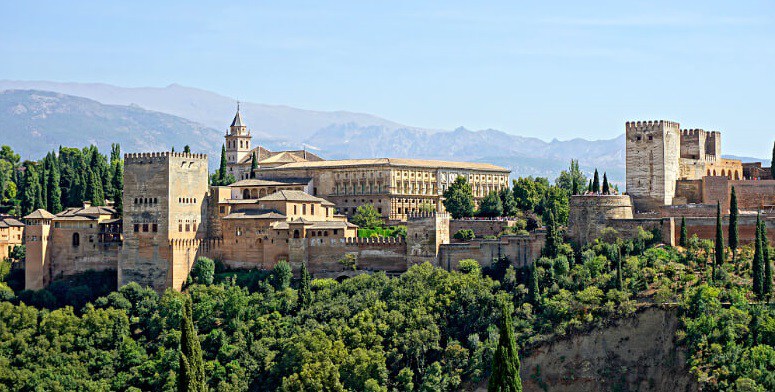
The history of the Alhambra is linked to the geographical location where found, Granadahttps://www.clubvillamar.com/villas/spain/andalucia-interior/granada/zoraima; on a rocky hill with difficult access, on the banks of the Darro River, protected by mountains and surrounded by forest, among the oldest parts of the city, the Alhambra stands like an imposing castle with reddish tones in its ramparts as the outside of the delicate beauty of its interior.
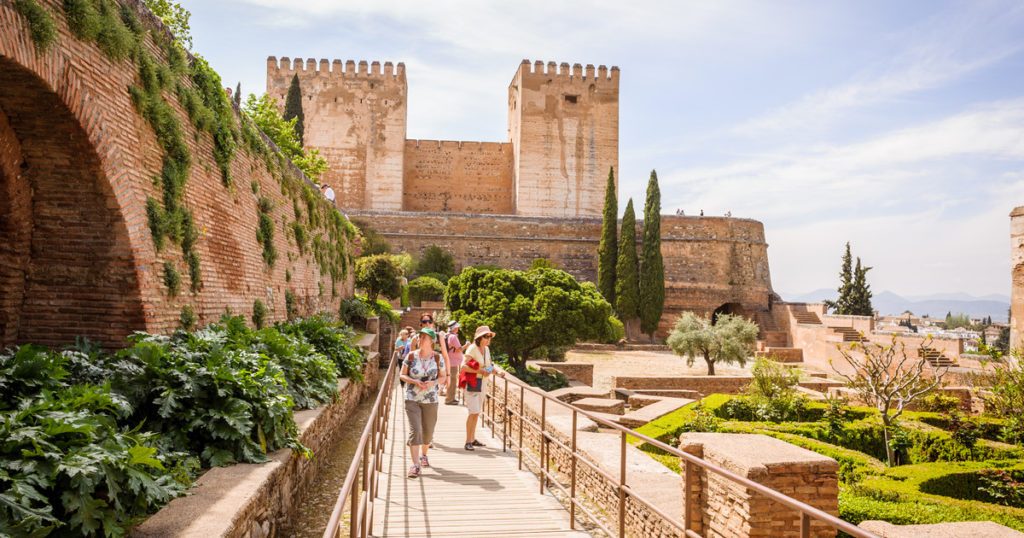
Designed as a military zone, the Alhambra became the royal residence and the courtyard of Granada, in the midst of XIII, following the establishment of the nazarí de reino and the construction of the first palace, by the founding king Mohammed ibn Yusuf ben Nasr, better known as Alhamar.
Throughout the s. XIII, XIV and XV, the fortress has become a citadel with high walls and defense towers, which houses two main areas: the military zone or Alcazaba, the barracks of the royal guard, and the medina or city palace, where the famous Nazari palace and the remains of the houses of the nobles and commoners who lived there. The Palace of Charles V (which is built after the capture of the city in 1492 by the Catholic Kings), is also in the medina.
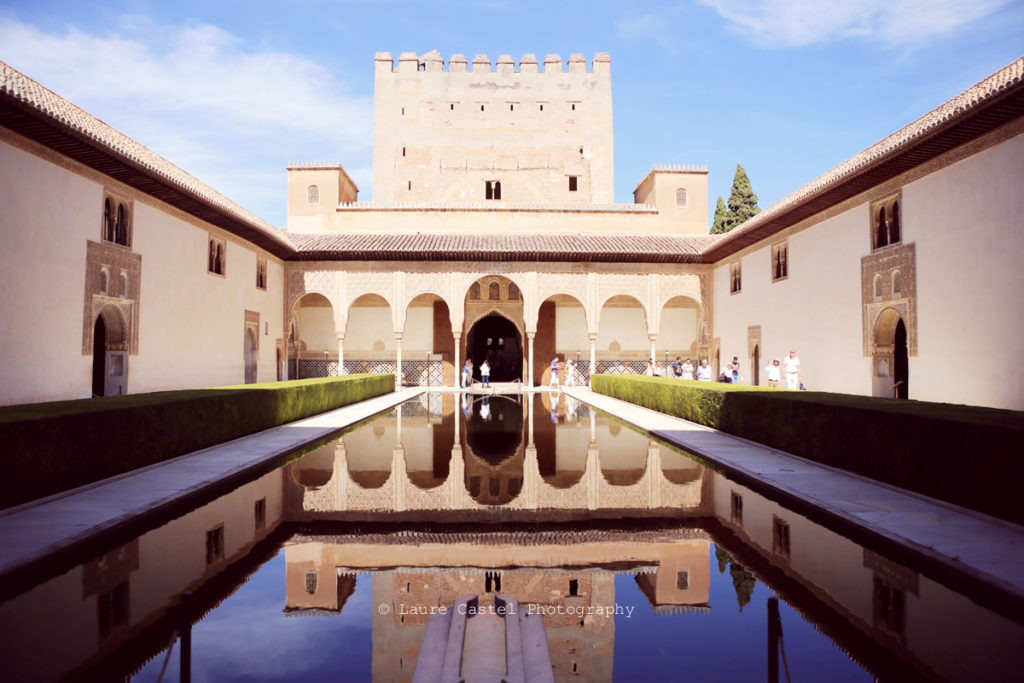
The monuments also has an independent palace in front of the Alhambra, surrounded by orchards and gardens, which was the greatest happiness of the Grenadian kings, Generalife.
The name Alhambra has its origins in an Arabic word meaning “red castle”, perhaps because of the hue of the towers and walls that completely surround the hill of La Sabica, which is under the light of silver-colored stars, but under the sun takes a golden hue. Although there is a more poetic explanation, narrated by Muslim chroniclers who speak of the construction of the Alhambra “under the torchlight. Originally created for military purposes, the Alhambra was an alcazaba (fortress), a palace (palace) and a small medina (city), all at the same time. This triple character helps us understand the many features of this monument.
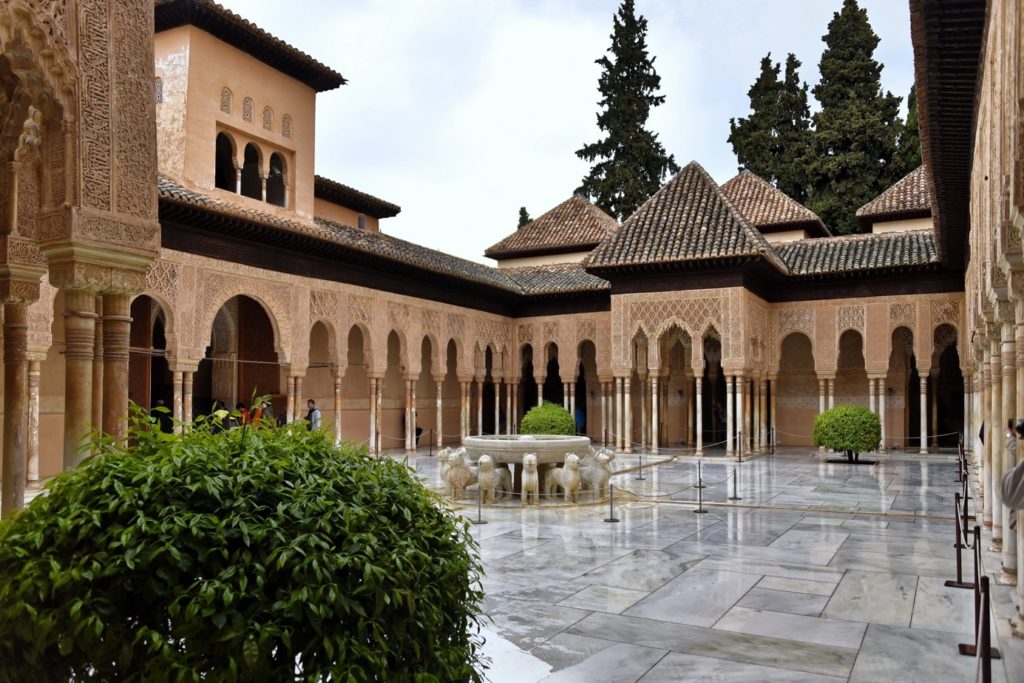
There is no reference to the Alhambra as a royal residence until the 13th century, although the fortification existed since the 9th century. The first kings of Granada, the Ziritas, had their castles and palaces in the hills of Albaicin, and there remains only one of them. Zards monarchs were most likely the emirs who built the Alhambra, from 1238.
The founder of the dynasty, Muhammed Al-Ahmar, began with the restoration of the old fort. His work was completed by his son Muhammed II, whose immediate successors continued with the repairs. The palace building (called Casa Real Vieja) dates back to the 14th century and is the work of two great kings: Yusuf I and Muhammed V. Muhammed V, completed the embellishment of the palaces with the Lions Hall, as well as other pieces and fortifications.
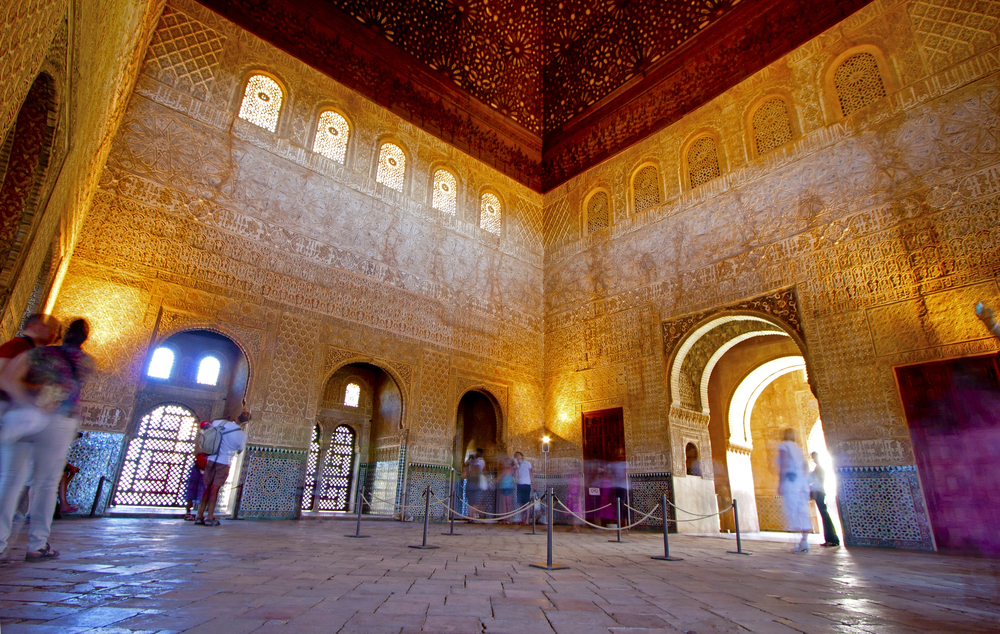
The Alhambra became a Christian court in 1492 when the Catholic Kings conquered Granada. Subsequently, several structures to house the notables, the military barracks, a church and a Franciscan monastery were built.